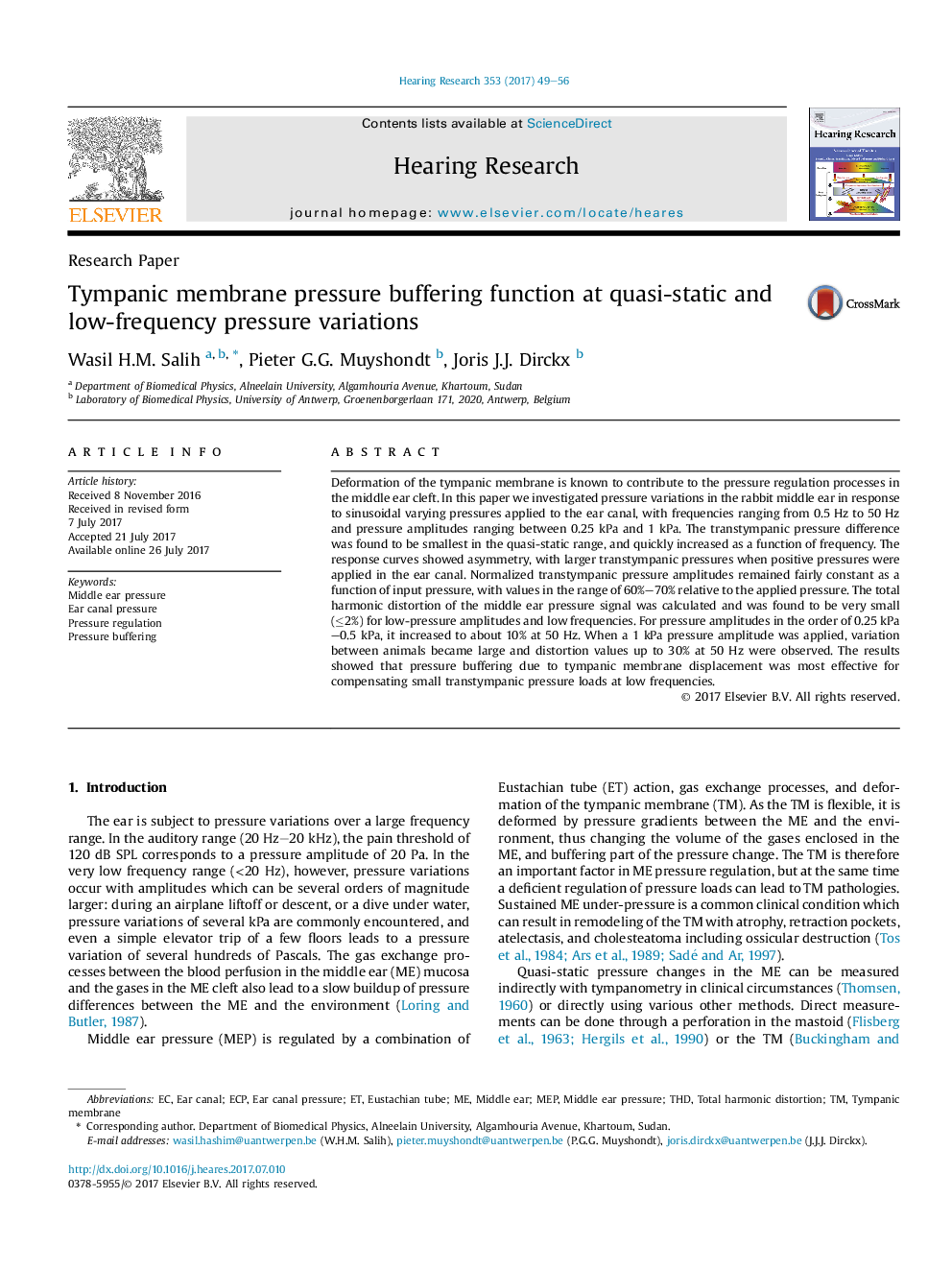| کد مقاله | کد نشریه | سال انتشار | مقاله انگلیسی | نسخه تمام متن |
|---|---|---|---|---|
| 5739333 | 1615547 | 2017 | 8 صفحه PDF | دانلود رایگان |
- Middle ear pressure in rabbit is measured as a function of sinusoidal varying ear canal pressure.
- Pressure amplitudes from 0.5Â kPa to 2Â kPa, frequencies from 0.5Â Hz to 50Â Hz.
- Trans-tympanic pressure increases as function of frequency.
- Total harmonic distortion of middle ear pressure increases as function of frequency and amplitude.
Deformation of the tympanic membrane is known to contribute to the pressure regulation processes in the middle ear cleft. In this paper we investigated pressure variations in the rabbit middle ear in response to sinusoidal varying pressures applied to the ear canal, with frequencies ranging from 0.5 Hz to 50 Hz and pressure amplitudes ranging between 0.25 kPa and 1 kPa. The transtympanic pressure difference was found to be smallest in the quasi-static range, and quickly increased as a function of frequency. The response curves showed asymmetry, with larger transtympanic pressures when positive pressures were applied in the ear canal. Normalized transtympanic pressure amplitudes remained fairly constant as a function of input pressure, with values in the range of 60%-70% relative to the applied pressure. The total harmonic distortion of the middle ear pressure signal was calculated and was found to be very small (â¤2%) for low-pressure amplitudes and low frequencies. For pressure amplitudes in the order of 0.25 kPa-0.5 kPa, it increased to about 10% at 50 Hz. When a 1 kPa pressure amplitude was applied, variation between animals became large and distortion values up to 30% at 50 Hz were observed. The results showed that pressure buffering due to tympanic membrane displacement was most effective for compensating small transtympanic pressure loads at low frequencies.
Journal: Hearing Research - Volume 353, September 2017, Pages 49-56
